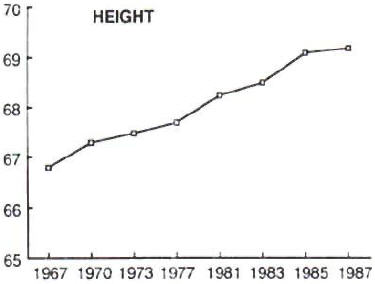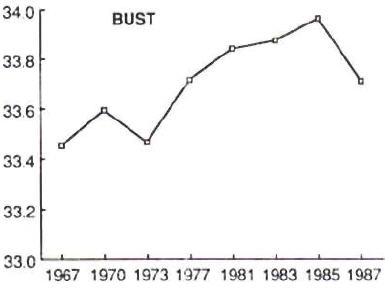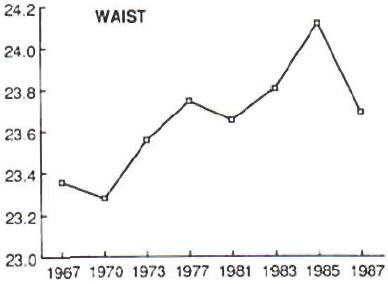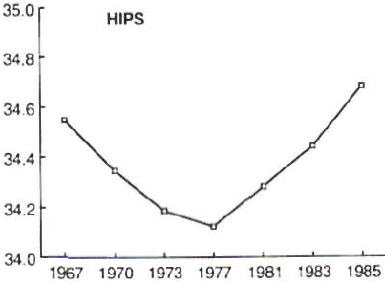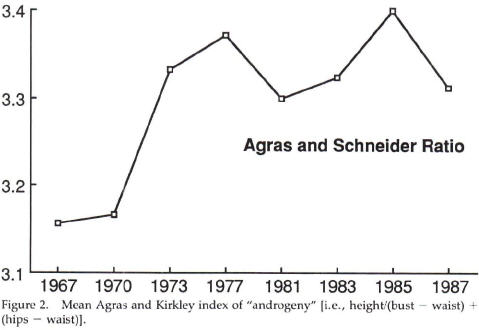A commentator pointed out:
I sometimes wonder why thin is in right now--- for the most part, fashion recycles itself-- in the 60’s and 70’s thin was in, then in the 80’s and a good portion of the 90’s the “Amazon” models were popular, like Linda Evangelista and Cindy Crawford. So one would expect this to start recycling itself...but it hasn’t.
The commentator appears to have been mislead by the supermodel phenomenon that characterized part of the 1980s and 1990s. Whereas the supermodels, i.e., the most famous ones, were not super skinny, the norm among high-fashion models was to be skinny and masculinized; the supermodels were surely no exemplars of femininity themselves.
Morris et al.(1) obtained fashion model statistics from a London fashion modeling agency for the time period 1967-1987. Due to missing data, the results were reported for 1967, 1970, 1973, 1977, 1981, 1983, 1985 and 1987.
There was a steady increase in average height.
There was a trend for bust size increase but it was not statistically significant.
The waist size increased.
The hip size did not significantly change.
The women became more androgynous with respect to an increased waist size relative to bust and hips.
Subsequently, Sypeck et al.(2; zip) examined the slenderness and degree of body exposure of fashion models on the cover of four popular fashion magazines -- Cosmopolitan, Glamour, Mademoiselle and Vogue -- from 1959-1999. They found that fashion models became significantly more slender during the 1980s and 1990s, and that “there was also a dramatic increase in the frequency with which the media depicted the entire bodies of the models from the 1960s to the 1990s.” In other words, women were exposed to more of the bodies of increasingly slender women over the time period.
Sypeck et al. wrote:
Both the increasingly thin images and the striking increase in full-body portrayals suggest an increase in the value placed by American society on a thin ideal for women, a change that is concurrent with the increase in disturbed eating patterns among American women.
Well, it is not the value placed by American society on a thin ideal, but gay fashion designers -- taking advantage of increased societal tolerance of homosexuality -- making their presence in the fashion industry more obvious by increasingly selecting models closer to the looks of boys in their early adolescence. Those who object to this statement by pointing out the height trend and that boys in their early adolescence are typically not 5-foot-10 should read this entry on Abbie Gortsema.
The slenderness trend did not stop in the 1990s. In 2006, some fashion models died as a result of undereating to maintain a very skinny physique, prompting Spanish and Italian authorities to crack down...the public needs to wake up as to why fashion models need to be skinny.
References
- Morris, A., Cooper, T., and Cooper, P. J., The changing shape of female fashion models, Int J Eat Disord, 8, 593 (1989).
- Sypeck, M. F., Gray, J. J., and Ahrens, A. H., No longer just a pretty face: fashion magazines' depictions of ideal female beauty from 1959 to 1999, Int J Eat Disord, 36, 342 (2004).
